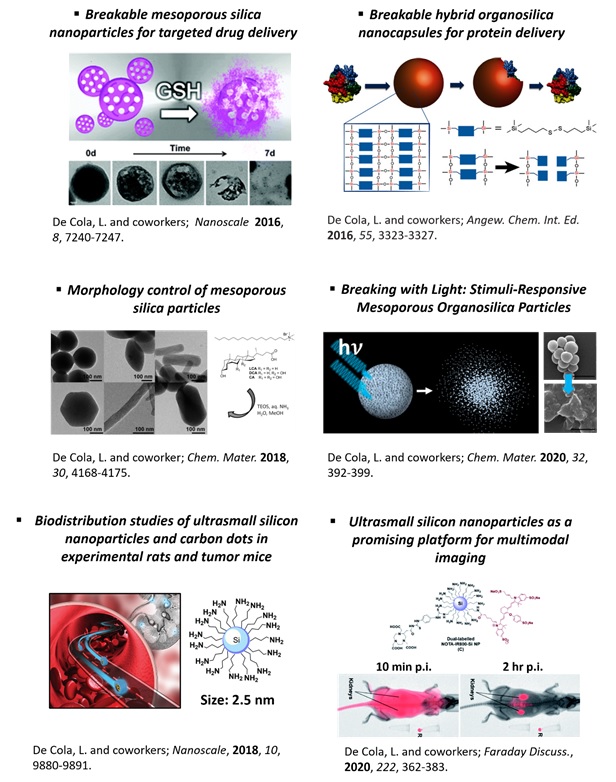Nanomaterial for Drug Delivery and Imaging
It is our aim to develop novel materials for the treatment and prevention of diseases by combining expertise of nanotechnology, chemistry and biology in order to prepare superior nanomedicines.
Nanoparticles (NPs) are considered to be highly promising materials for the development of improved medical tools in the detection and treatment of diseases. In fact, due to the particle’s small size new physicochemical properties, such as photoluminescence, increased surface area or chemical reactivity arise, which are normally absent in the bulk phase. Furthermore, NPs can be intelligently designed in order to transport drugs to diseased tissues and organs, while simultaneously allowing to image essential biological processes.
Particularly advantageous in developing novel nanomedicines is the use of mesoporous organosilica particles, due to their favorable physicochemical and biological properties. The particles possess high surface areas (~1500m2g-1), the presence of mesopores (2-50 nm) and good biocompatibility. Further, it is possible to prepare them in a variety of shapes such as spherical, disc or rod-shaped particles. The presence of stimuli-responsive organic functional groups within the inorganic silica framework allows for the preparation of nanoparticles that can degrade in the presence of an external chemical or physical stimulus — an important aspect when it comes to ensure the particles elimination once injected in a living organism.
Our group works on the development of novel breakable organosilica particles (OSPs) for biomedical applications. For this purpose, big effort is devoted in the design and synthesis of new stimuli-responsive alkoxsilanes, the development of surfactant-templated methodologies to prepare porous OSPs and their translation for biological applications. The particles we develop are able to encapsulate and release a wide range of molecules such as small hydrophilic and hydrophobic molecules to large biomolecules (e.g. proteins and oligonucleotides).
Furthermore, we develop luminescent silicon nanoparticles (SiNPs) for bioimaging applications. As previously mentioned, by shrinking the size, brightly fluorescent and biocompatible SiNPs are prepared, which can be further functionalized to obtain particles suitable for multimodal imaging applications. Due to their small size (~5 nm) SiNPs can be easily eliminated from living organisms once intravenously injected, rendering this type of material a highly promising platform form the development of new imaging probes.

